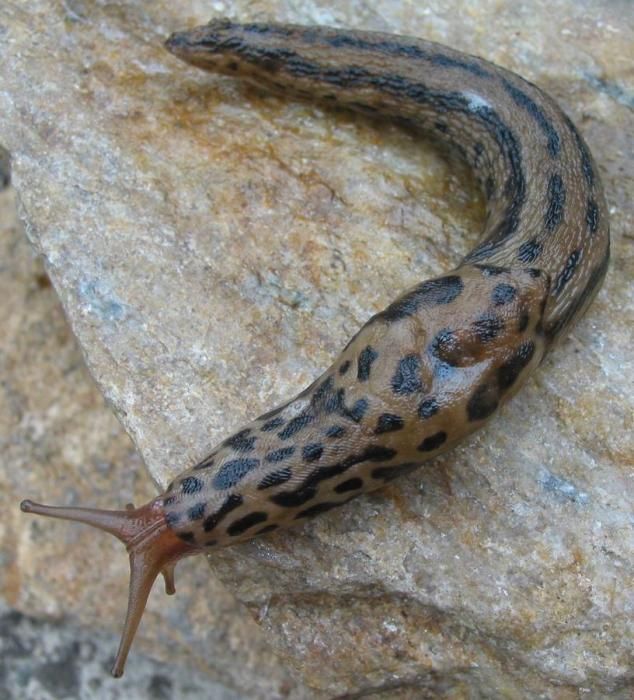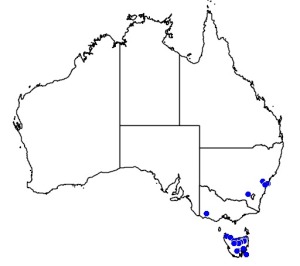Colours
Distinguishing features
The greater part of the body is rounded, but there is a short keel on its tail, with about 48 longitudinal rows of elongate, detached tubercles. The colouration and exact patterning of the body of this slug species is quite variable. Generally, the animal's body color is pale-grey, ash-colored, brownish or sometimes yellowish-white. The body is longitudinally streaked or spotted with black. The shield is always black-spotted. The sole of the foot is ash or yellowish-ash colored, and the color is always uniform. The foot-fringe is pale, with a row of minute submarginal blackish tubercles. (Wikipedia)
Size
- Up to 20 cm (Length of specimen)
Synonyms
Interesting facts
- This species has a very unusual and distinctive mating method, where the pair of slugs use a thick thread of mucus to hang suspended in the air from a tree branch or other structure. (Wikipedia)
Distribution
Distribution and habitat preferences
Although native to Europe, this species has been accidentally introduced to many other parts of the world. (Wikipedia)
Chronotypes
Diet
It is omnivorous, eating dead plants and fungi, live plants, and other slugs, which it catches with its relatively high 14 cm per minute top speed.



